Getting X-rays at the dental office is essential for comprehensive care as it allows us to see where our eyes cannot. However, there is a guideline on how many are taken and how often. As a dental hygienist, I discuss X-ray exposures with my patients and how often X-rays should or should not be taken at the dental office.
X-rays (radiographs) are taken every 1-5 years, depending on the condition of the patient and the type of X-rays taken. Bitewings (cavity detecting) and periapical (capture root tips) X-rays are taken every 2 to 3 years but may be taken yearly to monitor issues. Panorex is taken every 3-5 years.
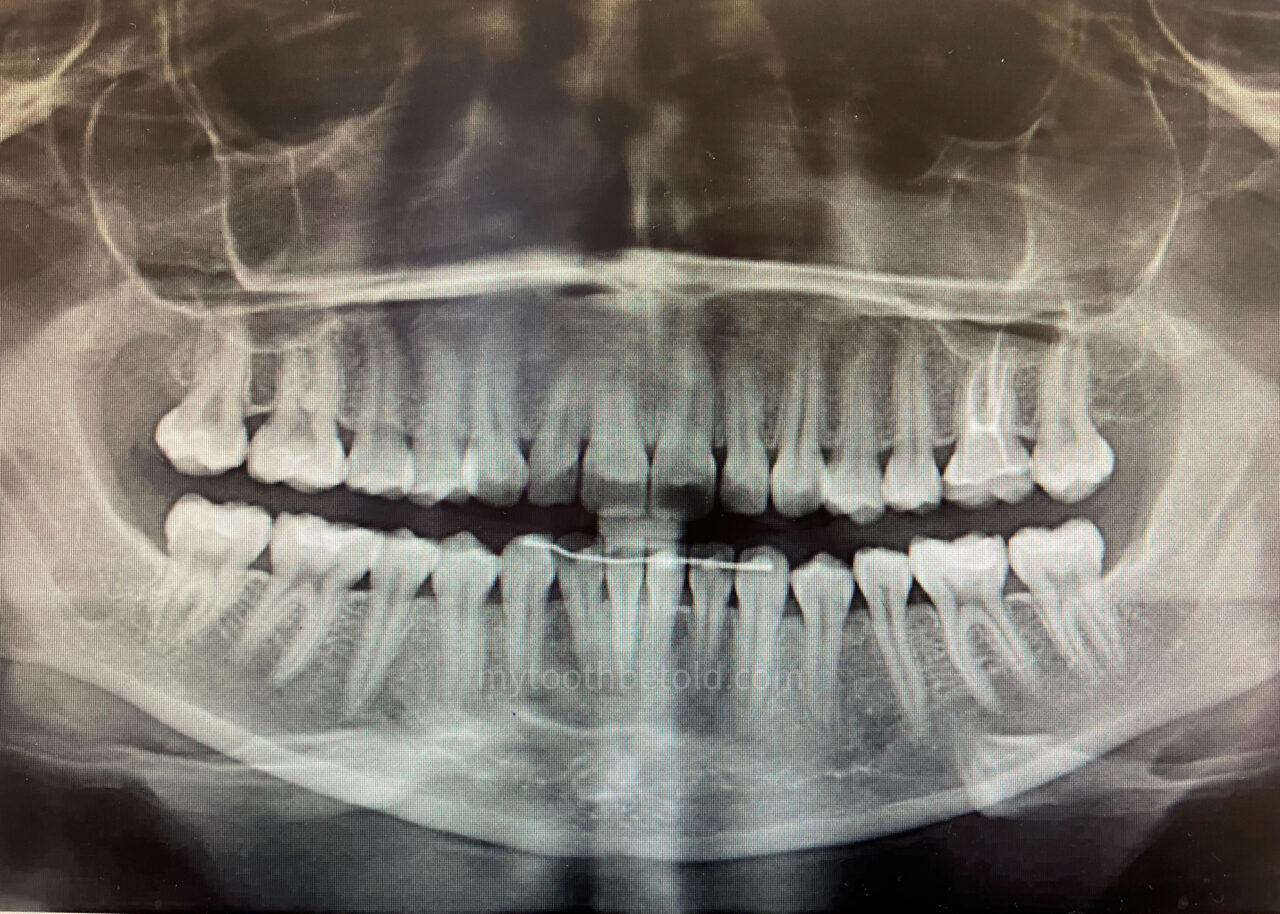
In this post, I outline the frequency timelines for taking X-rays, what to look out for to ensure you don’t have too many X-rays taken, and if you can refuse X-rays.
I also include a graphic that compares dental X-rays’ radiation to other common radiation sources!
Frequency of dental X-rays; How often should you get X-rays at the dental office
Many dental offices are taking too many X-rays. Even though the radiation amount is very low, it is still radiation. And I will be honest here, dentistry is a business, and if dental offices go from taking X-rays every two years to every year, they have doubled their income for that treatment alone.
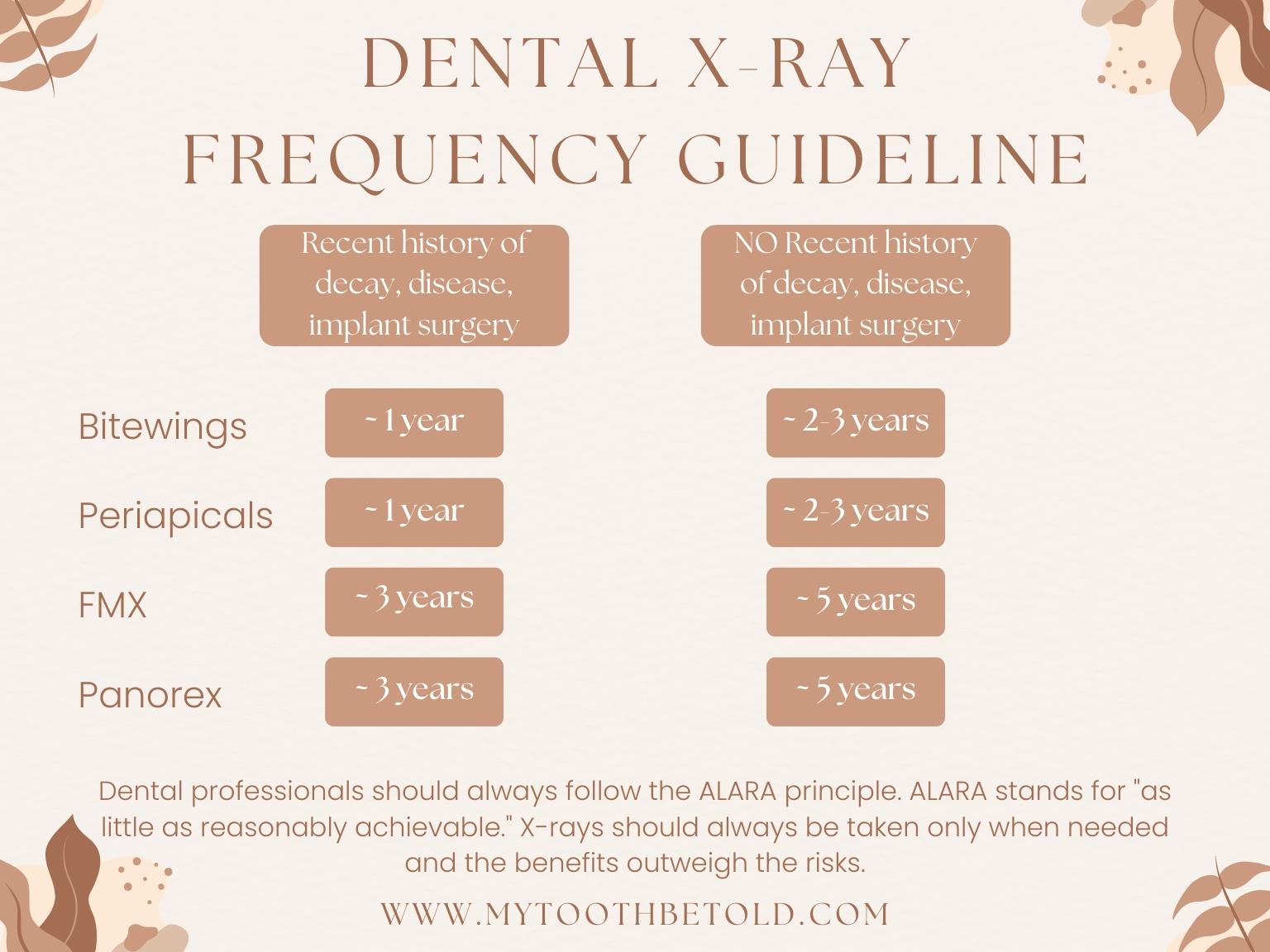
We all need to make money to survive, but it should not be at the expense of the patient being exposed to unnecessary radiation.
X-rays are essential to our treatment and your comprehensive care, but we want to ensure that the ALARA principle is adhered to.
ALARA stands for “as little as reasonably achievable” and refers to dental professionals taking precautions to expose our patients to the least amount of radiation possible while providing comprehensive treatment.
There is a delicate balance between taking them frequently enough to catch dental problems early and taking too many. And as a dental hygienist, I also use the X-ray to see patterns in the bone, tooth shape and angulation, all of which allow me to give the patient better care.
I wrote a whole post about the need for X-rays for hygiene appointments! I cover all aspects of how I use X-rays for my patient’s treatments.
Read Now: Dental Hygiene: Are X-Rays Needed for Teeth Cleaning?
However, it is essential to remember that there are situations that do warrant yearly X-rays because the benefit of taking the X-ray is higher than the risk of not taking it.
Situations that warrant yearly X-rays
- recent implant surgery
- recent tooth decay
- incipient lesions (very first stage of cavity formation)
- gum disease that is progressing
But in saying so, no dental office should have a policy that they take X-rays on every single patient every 12 months.
X-rays should be taken only if the patient needs them and the benefits outweigh the risks. Below I explain why there are different frequencies for taking different types of X-rays.
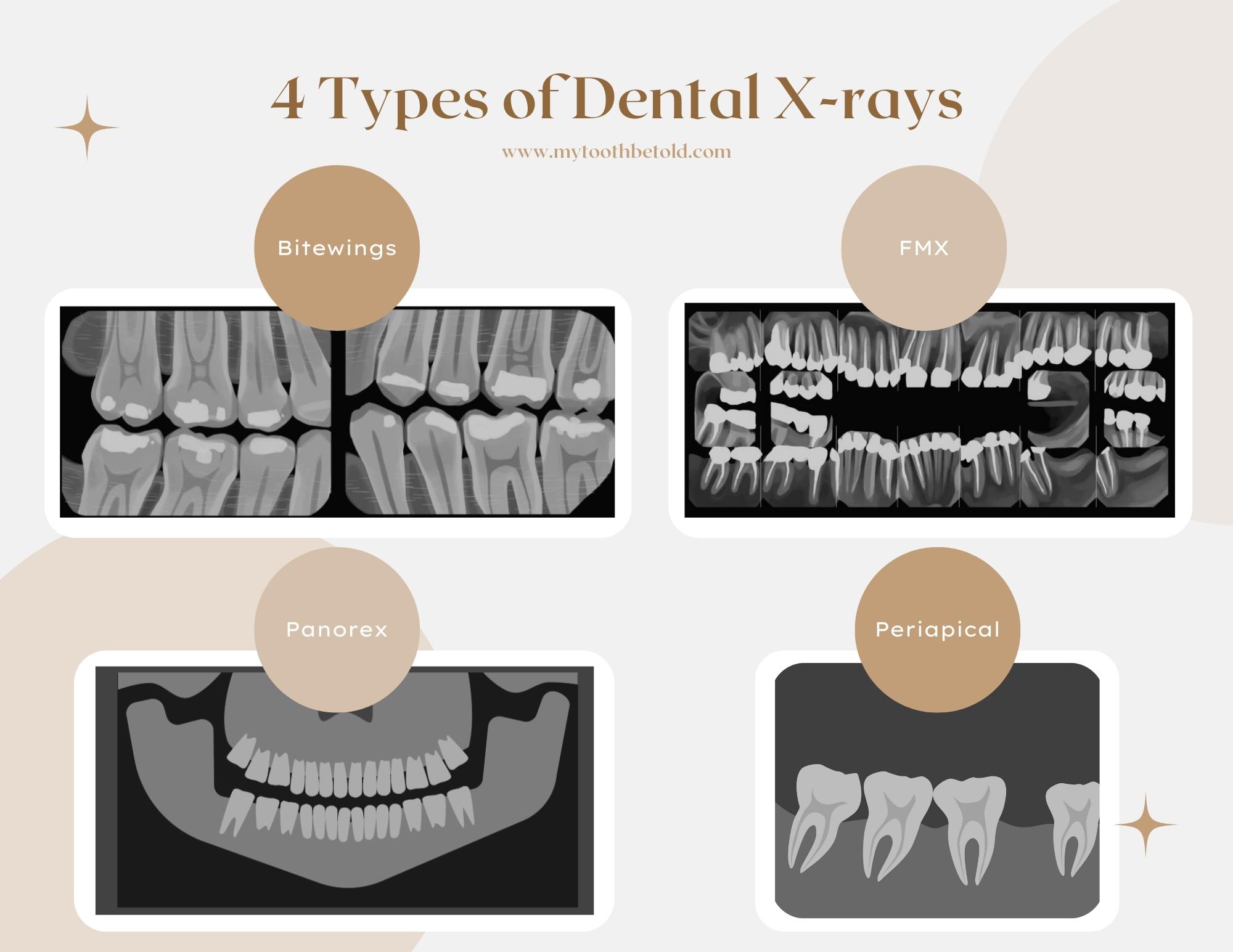
Bitewings
Generally, bitewings are taken every 2-3 years if the patient is healthy.
Bitewings are taken to examine the tooth’s crowns for tooth decay, bone levels and health, and calculus (tartar) formation. They provide us, dental professionals, an eye into what we cannot see with the naked eye. Unfortunately, we don’t have X-ray vision yet.
Sometimes, we see a cavity’s beginning stages forming when I take bitewings. The dentist may tell me to take another bitewing in one year to check and see if it has progressed.
Improved oral hygiene, fluoride or nano-hydroxyapatite use, and diet changes can stop the cavity from getting bigger and result in not needing a filling!
Bitewings do not show the root tips of the teeth. That is what periapical X-rays show, which is discussed next.
Periapicals
Periapical X-rays should only be taken on an as-needed basis if there is a concern for infection, root resorption, cracks/fractures below the gum line, or an adjunct to treatment. For example, if you have had a root canal treatment, a periapical X-ray will be taken throughout the treatment to ensure it has been completed properly.
If the dental office takes periapical X-rays of the teeth, they may be taken every 2-3 years unless they are watching a specific area, where they may take another one in 1 year.
Panorex
A panorex (PAN) X-ray is vital in diagnosing and seeing a broader area rather than multiple periapical X-rays.
A PAN is taken at around 5-6 years of age to ensure that all the adult teeth are present in a child’s jaw, underneath their baby teeth. And after that, it may be taken every five years after that.
If a specific area needs to be examined, such as wisdom teeth, they may be taken more frequently around the age of wisdom teeth eruption.
I have had a few young kids in my dental chair over the years, and when we take the PAN, we discover adult teeth missing.
It is essential to know this early on so there is enough time to plan the best treatment options and use the growing jaw to aid in interventions.
In my dental chair;
I had a child in my dental chair and took a PAN when he was six years old. I saw on the PAN that he was missing his two lower front adult teeth. His baby teeth in that location were a little bit loose. Thankfully we saw on the X-ray he was missing these teeth because, like any dental professional, if teeth are beginning to get loose, we advise frequent gently wiggling.
If I told him to wiggle the teeth, they would have come out soon after, and it could have long-term detrimental effects, as the space needs to be maintained for future treatments. Treatments at a young age are complex because the jaws are chronically growing.
Again, this is why PAN X-rays are so necessary!
FMX
An FMX stands for full mouth X-rays or full mouth series. These series of X-rays consist of 18 to 20 X-rays.
Some dental offices do not own a PAN machine. (if the dental office does not own a PAN machine, I would switch dental offices because I believe they are not providing comprehensive care!). Especially for the example I mentioned above.
So they take what is called an FMX.
The FMX contains more detail of the teeth than a PAN, but a PAN provides views of structures that would never be captured on an FMX.
For example, in the pan below, we can see a portion of the eye sockets, the nasal septum, and the maxillary sinuses above the upper jaw/teeth. We can also see the temporomandibular joint, and we can even see salivary gland stones if they are present!
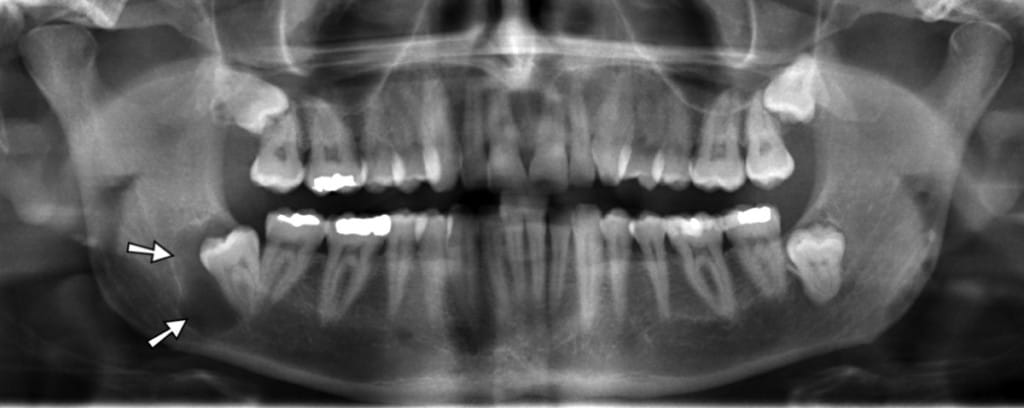
One day I was working with a client, and I took a PAN and noticed a large polyp in my patient’s nasal cavity. This prompted a referral to another healthcare professional for further treatment. Finding this on the PAN improved their quality of life. If we did not take this, we wouldn’t have caught it. The patient wouldn’t have had it treated and may still be dealing with his discomfort.
But I don’t believe an FMX should be taken as well as a PAN. If the PAN does not show an issue, but inside the mouth, we observe deep pockets, unexplained swelling, or the patient is complaining about a specific area, then we will take one periapical X-ray of that tooth, not a full FMX.
Occlusal and Cephalometric
Occlusal and cephalometric X-rays are not taken as often as the other dental X-rays I mentioned above in this post.
Occlusal X-rays are more frequently taken on children vs adults. They can detect fractures in the jaw bone and give a visual of tooth development and other common tooth issues.
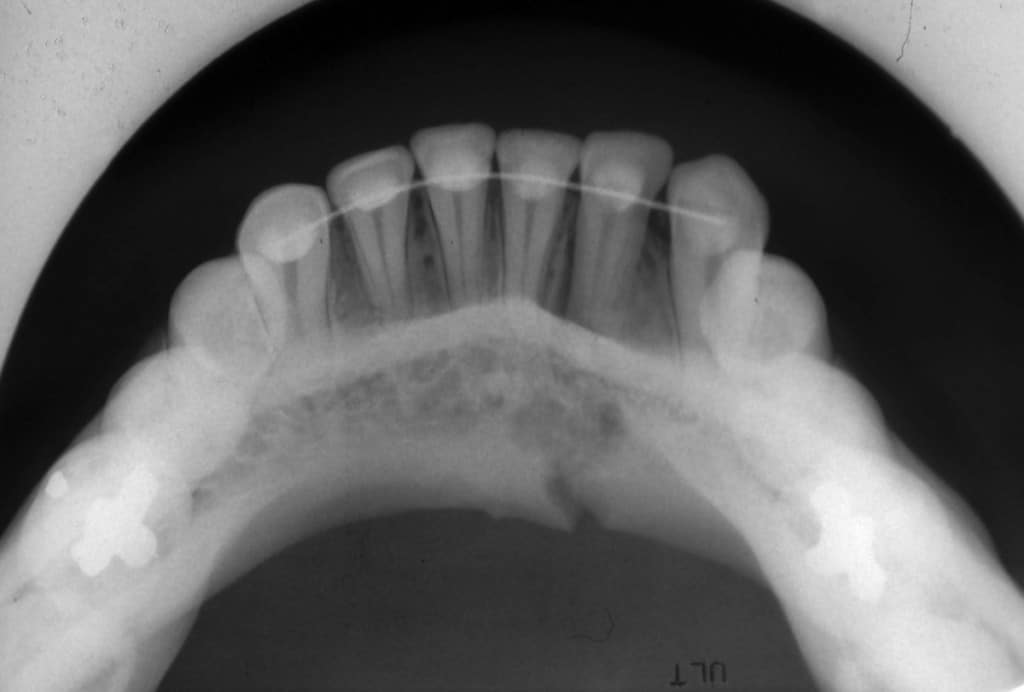
Cephalometric X-rays (also called a ceph) are a side profile view of the patient. We use a ceph to determine the bite and occlusion of the teeth in orthodontic treatment.
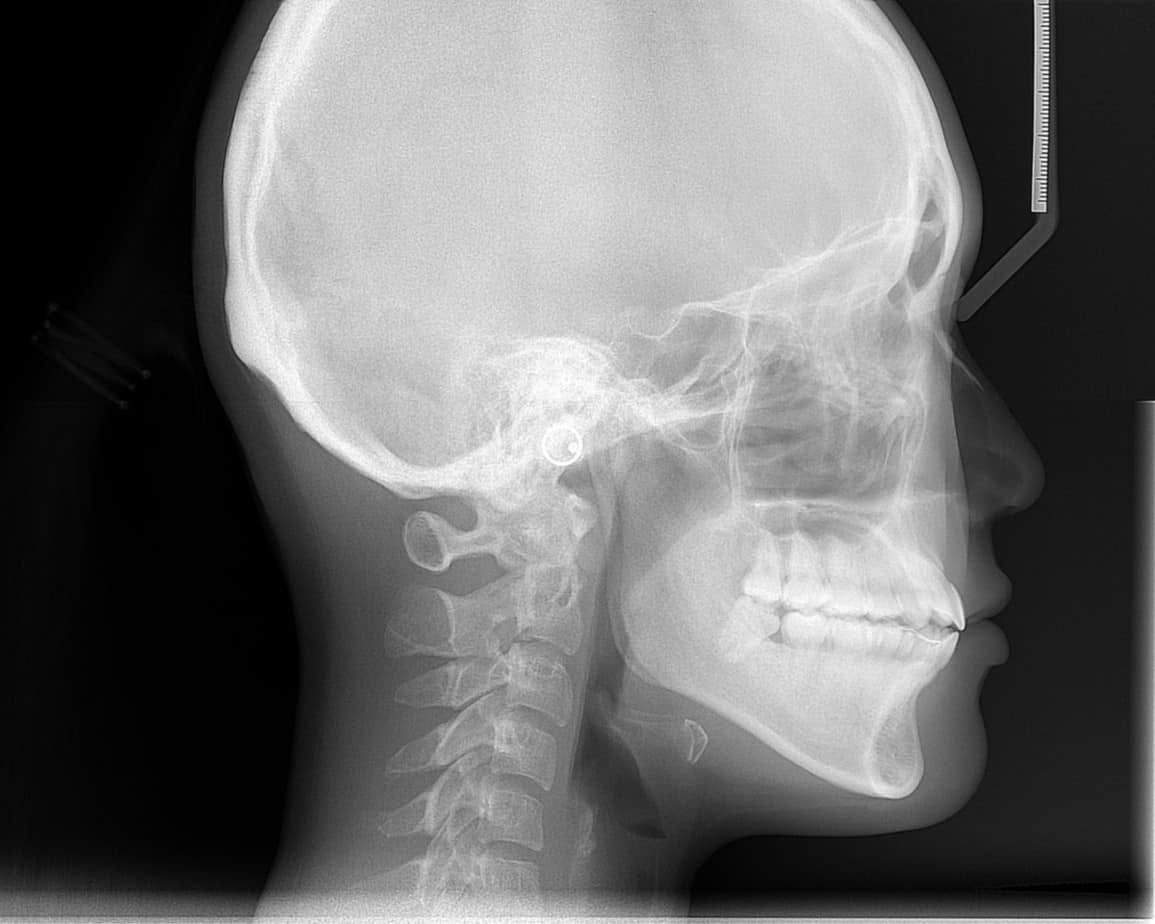
Radiation Comparison in Micro Sieverts
The amount of radiation you receive from dental X-rays is low compared to other sources we are exposed to, but again, it does not mean we should be taking them too often.
The infographic I created below shows the difference in radiation dosages in micro sieverts for common exposures we get in life.
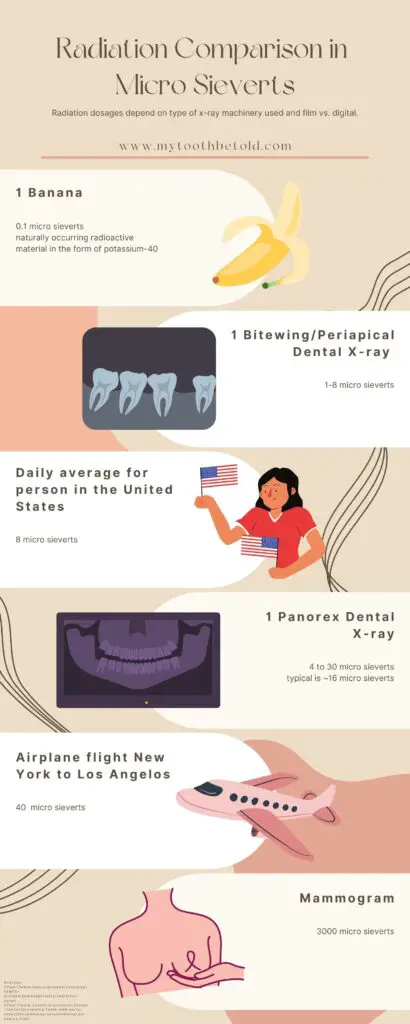
How do I know if my dental office is taking too many X-rays?
X-rays are an integral part of your care at the dental office, and again, without them, it can be like treating you as if we are blindfolded, as we cannot see underneath the gumline or inside the teeth.
However, the time frame between treatments will vary between people.
Because of the ALARA principle, X-rays should only be taken if necessary.
There should always be a reason to take X-rays, not just out of routine or “because the insurance will pay for it.”
There are instances where offices can take too many X-rays because they can, and the patient’s insurance company will cover the cost.
But how do you know if you are getting too many X-rays?
If you get X-rays at the dentist every year, have a healthy mouth, and do not have a history of advancing gum disease or recent tooth decay in the past few years, you are being overexposed.
If you want to know more about bone loss and gum disease, I wrote a comprehensive post about whether bone loss can be reversed, linked below!
Read Now: Can Bone Loss in the Jaw Be Reversed? Hygienist Explains.
If the dental professional needs to take X-rays for a specific reason, it should be explained to you by the dental professional.
I always explain to my patients why they need X-rays taken and what we are looking for and observing, and I show my patients the X-rays after they are taken, showing them the details and what the findings are so they can see them and understand their value.
The simple suggestion I say to follow if you are concerned you are getting too many X-rays is to ask your dental professional politely for an explanation. It is your body, and you have a right to ask questions.
I value my patients who have asked questions because I love teaching and explaining anything dental (hence the creation of this website). I want people to see value in their dental care and oral health, and answering my patient’s questions allows me to provide them with value.
You can politely ask, “do you mind explaining why we need to take X-rays if we just took them last year?”
If you ask the dental professional taking the X-rays (be it the dentist, dental hygienist, or dental assistant) why they are taking the X-rays every year and they respond with “it’s routine,” that is a red flag. X-rays should never be done on a routine basis once a year.
Unless there is a specific area being monitored, this should be communicated to you by the dental professional.
You are allowed to ask questions and ask to defer X-rays. However, your mouth is unique, and if you need then taken more frequently, you should be told why by the dental professional.
Can I refuse dental X-rays? How, what to say, and risks
Anyone can refuse dental X-rays, as they are not obligatory. You have the right to refuse any treatment. However, refusal of dental X-rays may have consequences. Undiagnosed dental issues and dismissal from the practice can occur with refusal.
However, the dental office may get you to sign a refusal form if you refuse altogether. Signing a refusal makes you aware and understand that if dental issues are missed due to the refusal of X-rays, the dental office and staff cannot be held liable.
I worked for a dental office that did this because they had to cover themselves against liability. However, our dental charts are classified as legal documents. We write in your dental chart notes when refusal is done, so sometimes offices will not make a patient sign a form.
There is always a risk if X-rays are deferred. Again, it is finding the balance between risk and benefit.
And just because you don’t feel any pain or discomfort does not mean there are no issues in your mouth. Pain often comes at the more advanced and progressed stage of dental problems, and when caught late, the treatment may be much more expensive and invasive and even result in tooth loss.
A personal story from my dental chair;
I had a patient who chronically refused X-rays. She understood the risks of not having them, and diagnosing decay that forms under the gumline, on the surface right below where two teeth touch, is challenging without X-rays.
I was cleaning her teeth, and her filling came out, and she swallowed it. She was unhappy as she swallowed her filling and thought it was my fault.
However, I could now see the tooth structure underneath where the filling was was full of tooth decay.
The dentist discussed this with her and told her we needed an X-ray of that area to determine how deep the cavity was and assess the tooth’s health.
The decay was so deep that the patient needed a root canal and a crown to restore the tooth to become healthy again.
The lesson of this story is that you don’t want to refuse X-rays altogether, as if they are taken more frequently, issues can be caught early, and preventative or less invasive treatments can be performed. This will prevent tooth loss and more expensive treatments.
If we had taken X-rays on this patient earlier, the cavity forming would have been seen, and a simple filling replacement could have been done for a couple of hundred dollars. Instead, the treatment she needed to save the tooth cost her over $2000.
I hope you have found this information helpful!
Have a great day,
Holly 🙂
